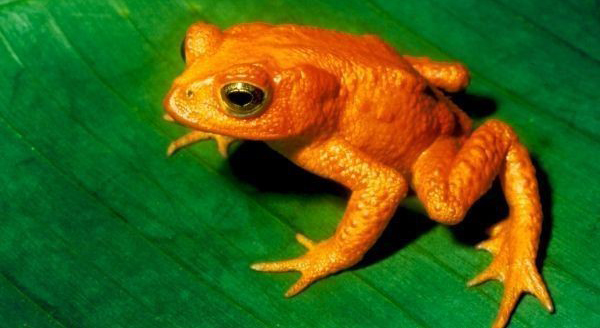About 5 years ago we moved from the city into a home of our own. Before, we lived in Offenbach (right next to Frankfurt/Main), nearly in the city center, and were also quite happy to be living in a large city.
Our shopping habits were oriented pretty much on the offers of the weekly market. We preferred produce which grew in the region, and thus could also be bought without it having taken long transport journeys. One could know that the environmental commitment was already there, and clearly the climatic change existed, but direct effects with us? No, actually not. Continue reading “From a city-dweller to a home owner”
Rain and Wind go away
(Personal Experience of Angeles Logon – Bgy. Balokawe, Oras, Eastern Samar, Philippines)
When news report that a super typhoon named Ruby is approaching, village officials and policemen went from house to house asking the village folks to prepare for an evacuation. Our village is located along the coast directly facing the Pacific Ocean.
I immediately gather some clothes for me and my children. Clothes left behind were placed in the bed and covered by straw mat. I placed our chairs on top of it to prevent them from being blown away by strong wind. I only have P1,000 in my pocket to buy food and other necessities for our stay in the evacuation center. I bought rice, noodles, sardines, mosquito coil, gas, candles, sugar and coffee. The husband of my niece fetch us and brought us to the evacuation center. We were placed in one room together with 11 other familes. We could hardly squeeze ourselves in the small room. Then typhoon Ruby came. Continue reading “Rain and Wind go away”
My lovely Tights
I always thought I throw so little away. How I still use each dish of rice with fantasy, ingeniously! But then I looked more closely and a large black hole spread itself out, which covered over my self-satisfaction. I mean, it isn’t bad. But it seems so hopeless: my beloved stockings. I throw heaps of them away. Because it is so that I must wear stockings in the cold Central European winter, if I have to wear skirts and dresses. I like those made of cotton, because that feels good. But something, I thought then, do not fit with the special kind of my thighs. Continue reading “My lovely Tights”
Lamp Revolution
At the beginning of the 80’s climate change was not my topic. I was active in the peace movement: Pershing 2, NATO Twin Track Decision and so on. For this we went on the street and discussed fiercely wherever we found ourselves. I was also against nuclear power, but not with the friendly yellow sun. My stickers on the motorcycle panniers were the large peace dove and a blue sticker with the text: Stop the atomic industry – fight for life! It is probably the historical merit of the Greens to have brought together the two wings of the peace movement and the ecological movement. And so I thought slowly about saving energy and healthy meals and such topics. This preface serves to indicate to you from which generation I come.
Now to my „revolution“: It must have been 1987 that I bought an energy-saving lamp. We earned well, and I thought that I should begin with the careful handling of energy. The lamp was as large as a volleyball and cost approx. 45.00 DM. That was 30 times price of a normal 60W bulb. The only place where this lamp could hang was our bedroom. Not exactly the place light is needed for a long time and much light is used. And so I figured out (however only in my head, and thus surely incorrectly), how long it would probably take for this lamp to have amortized. I came to the crushing result that this lamp before its natural end would probably not amortize (I counted on approximately 30 years). However I was not depressed about it: Somebody had to begin, and that had to be the humans who can afford it.
Already in the following year bought I the next lamp. It was quite heavy and optically reminded one of a street lamp, but the price had come down. It cost only approx. 20.00 DM. Immediately I added together the two energy savers and the amortization time shortened substantially. I came on perhaps only 15-20 years. The next generation of the E-lamps was again cheaper and easier, and did not yet look like the conventional lamps. 2 arc-shaped tubes stood out from the socket. But the plan was realised: From now on I replaced defective lamps only with appropriate E-lamps. And I began with the recordings. On each new lamp the installation date was written, and exactly the same in a booklet. Starting from this time „the life“ of each lamp is exactly documented, also at which place it was and how long it was turned on. The last conventional lamp, by the way, was replaced in 2010 (in the cellar), there waited already a new E-lamp-generation, i.e. the LED lamp: Still less consumption, longer luminescence times and in addition even more pollution free. However also again more expensive, the prices (now already) for the conventional E-lamps had fallen to the bottom, I turned to the LED lamps. Logical.
In the meantime there are Philipps Hue lamps: still less consumption, even longer life span and with 2 million colours they can shine in practically every colour and temperature. Again it costs 30 times as much as a simple E-lamp. Now I am at the end of my project. According to my computations the new lamps will outlive me.
P.S. Should I try a new project now? How is it actually with mobility? An E-Mobil costs only twice as much as a car with combustion engine? Well, I’ll probably leave that to the next generation.
P.P.S. Nevertheless I bought a hybrid small car. Already a beginning….
[Andreas Ramme, Frankfurt am Main/Germany]
The Sapo Dorado (incilius periglenes)

In northwest Costa Rica Monteverde rises, with its famous cloud forest. In this damp, cool mountain forest in 1966 a little frog that shimmered orange-gold was discovered, the “Sapo Dorado” (incilius periglenes). The cute little guy became famous on account of his colour and was portrayed in the “National Geographic”; this contributed to the development of Monteverde for tourists. There is even a hotel named after him. Continue reading “The Sapo Dorado (incilius periglenes)”
Christmas Dilemmas
It’s Christmas, the season of love and hope, and I am even more than usual in a state of mental and emotional conflict.
How can I observe Christmas traditions without violating principles of sustainability? Just for starters, I have traveled by air from New York City, where I live, to San Francisco, where my two children live, a distance of 3,000 miles. Jet fuel is a major contributor to green-house gases. In fact, the airline I used, Delta, says on its website that jet fuel contributes 98% to “our carbon footprint”. Not sure what the “our” means in this case, but I already know jet travel is not a good thing for the planet. Continue reading “Christmas Dilemmas”
The dry Brook
The story begins in a small village named Cirali, in Turkey. I am 6 years old, and come each year to this place to spend my holidays. Çirali lies in the valley between the mountains. The sea can be reached by foot, by running through citrus plantations. The guest house in which we live is run by a very nice family.
I pass the time with catching small frogs which live in a brook, directly beside the guest house. So each year I come and catch frogs with my friends. Continue reading “The dry Brook”
“Half Orb”
“Medio Orbe” (10/2014). A compostion by Leonardo Serrano (14 años | The piece include the use of piano extended technique.) This composition reflects the feeling of the author about the problem of environmental pollution on the different elements of the Planet: Water, Air and Soil. Continue reading ““Half Orb””
Earth History and Atomic Threat
In my first year of studies 1983/84 I had to learn about the earth history and how our soil was formed. Right in this time there was a real possibility of a nuclear war. I was raising the following question to our lecturer and his answer made me very calm and took away my fears. My question was: What would happen to our earth in case of such a war, in which state will the planet be? Continue reading “Earth History and Atomic Threat”
Tree Nursery in the Dessert
Just imagine a region in East-Africa. It is a region similar to the Sahel concerning its climate. Just feature, that there was no rain for about three years and now think about, that thousands of people need firewood, because they have to prepare the food they get as destitute from an international donor agency. Continue reading “Tree Nursery in the Dessert”
